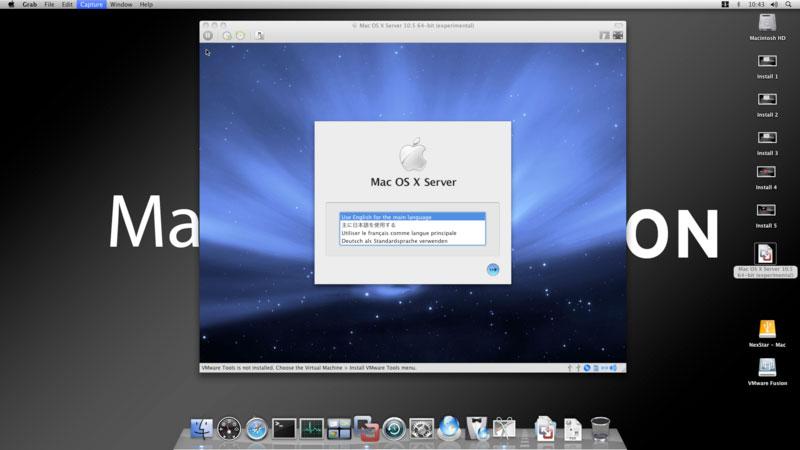

- #Mac osx server for vmware for mac os#
- #Mac osx server for vmware mac os x#
- #Mac osx server for vmware install#
ESXi 5.0 introduces hardware support for Apple’s Xserver 3,1 server.
#Mac osx server for vmware mac os x#
Then while in there use -v -install and it should install. The release of vSphere 5 introduces support for Apple’s Mac OS X Server operating system on ESXi 5.0, with the following support considerations: To run Mac OS X in a virtual machine, ESXi must be running on Apple branded hardware.

I’m going to walk you step-by-step through the process of fixing each little glitch as we run into it.
#Mac osx server for vmware install#
If you try to install it will give an Eboot error so you need to go to the advanced install by pressing F8. VMware technically doesn’t support OS X 10.4 through 10.6 (except for the server versions of 10.5 and 10.6), but if you follow these directions, it will work. Openssl dgst -sha1 -sign tools-priv.pem įor A in *.iso do openssl dgst -sha1 -sign tools-priv.pem $A.sig done Inside My Home Office Development Lab (VMWare, OS X Server) A little bit. Openssl rsa -in tools-priv.pem -pubout -out tools-key.pub A killer custom Apple Mac Mini setup running VSAN. Mv darwin.iso tools-key.pub *.sig original To trick VMWare into thinking that a client 10.5 or 10.6 disc is actually server, you have to edit Fusion's base image for new VMs: sudo bashĬd "/Library/Application Support/VMware Fusion/isoimages" This guide will assume that you already have and access to a real Macintosh in order to make the installation disk.
#Mac osx server for vmware for mac os#
Within this measure, give a name to a virtual server and also mention the place for Mac OS and. I announce the unlocker will look at the Apple Mac OS X on VMware Workstation. You’re probably using MacStadium because you personally use a Mac (let’s call it a MacBook Pro) for day-to-day work and recognize the potential of a. Inside this step, you must choose Apple Mac OS X and the version OS X, which you are going to set up on VMware Workstation, and click Next.


 0 kommentar(er)
0 kommentar(er)
